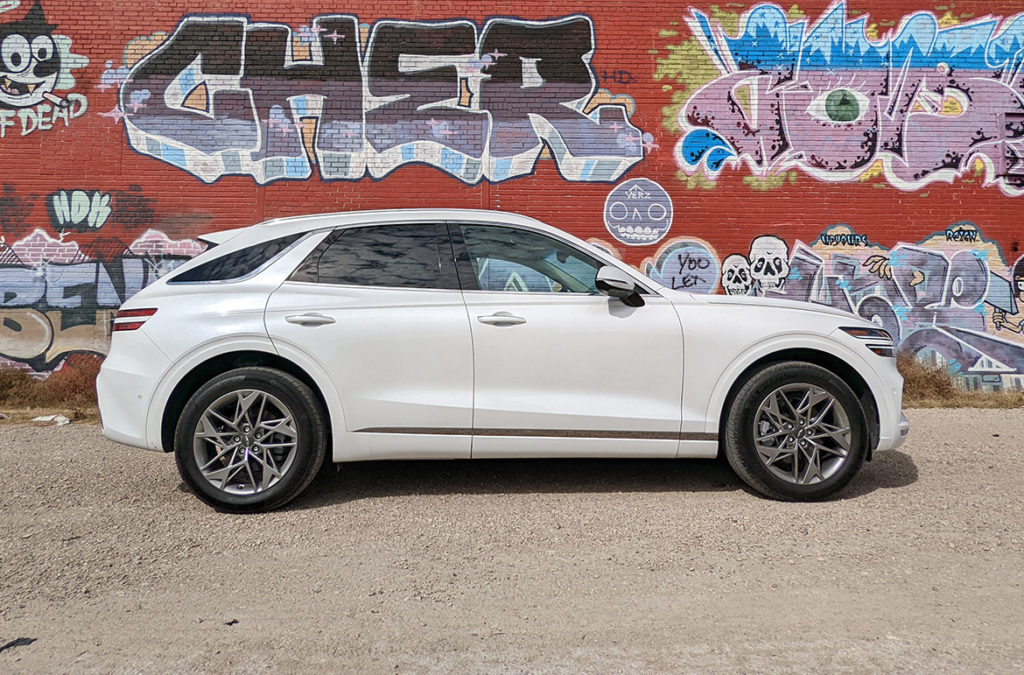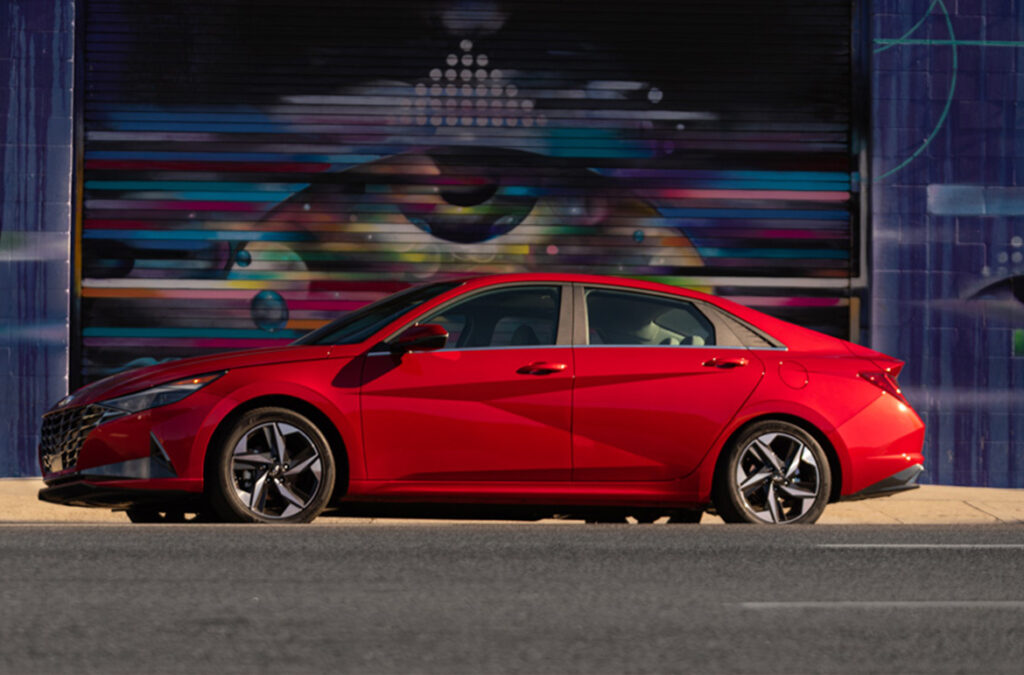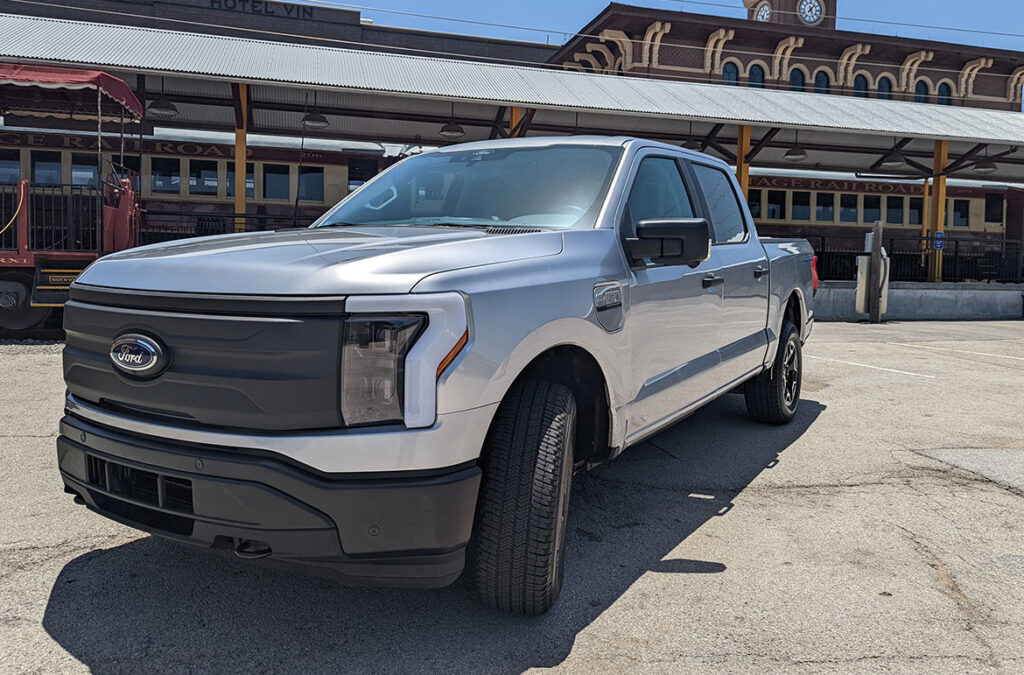
Movies like Back to the Future and television shows like The Jetsons led me to believe that by now, we would all be driving flying cars. As disappointing as it may be that we haven’t reached that peak of technological greatness yet, we still live in a pretty dope era of automobile innovation. Cars may not fly yet, but we are actively learning how to harness the power of electricity to create some pretty darn cool electrical vehicles. First, cars were electrified, and now electrified trucks are becoming a thing. But while electrical vehicle customers wait for Tesla’s Cybertruck, Ford has meanwhile decided to make the electric truck we never knew we always wanted.
Feast your eyes on the all-new Ford F-150 Lightning. It’s been called Ford’s most ambitious innovation since the Model T, and it could be the most important step taken toward a future where electric vehicles are the norm. The Ford 150 Lightning is, first and foremost, a truck but it lacks a combustible engine, so of course, the big question is, how powerful of an electrical engine can a truck have? Or perhaps the question should be, can an electrical engine really produce the kind of power truckers want? The Lightning is here to strike down any doubts about electric trucks, and while it may not be perfect, it’s one the coolest electrical vehicles for Dad Drivers looking to embrace the future.
What this Dad Digs About the 2022 Ford F-150 Lightning
The Power of Electricity – Any doubts you may have about an electrical engine in a truck are instantly washed away the minute you push the gas pedal and launch the Ford Lightning forward. It’s incredible how much power is generated from the pair of electric motors that live within the F-150. Combined, these two motors create 452 horsepower, but they can paired with either a Standard Range battery or an Extended Range battery. Opting for the Extended Range Battery raises the horsepower to 580! Factor in the 775 lb-ft of torque and expect to experience impressive power both in acceleration and towing capacity. For such a large truck, the electric engine managed to create an agile and thrilling experience behind the wheel. If you’ve driven an F-150 before, you find the same capable handling and steering here in the Lightning.
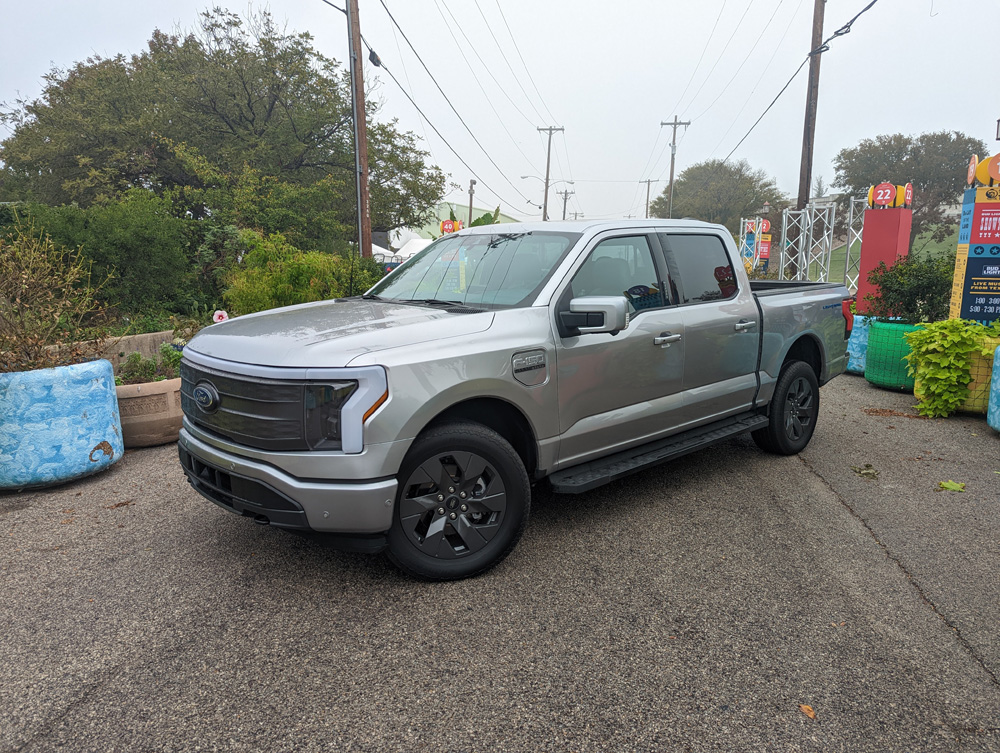
The Lightning has a towing capacity of 7700 pounds with the standard battery and 10,000 pounds with the extended range configuration. 10,000 lbs is enough to tow a decent-sized trailer, but there is a non-surprising tradeoff – towing or adding additional weight by have a large payload in the bed of the truck will cause your batter range to decrease by 15-20%. Still, it is nothing short of amazing to feel how powerful the lighting is, even when carrying or towing.
The Handy Frunk – There were a ton of features to show off to anyone interested in taking a closer look at the Lightning during my week with it but my favorite feature to show off (besides the electric engine’s power) was the “frunk” – also known as the front truck. With no combustible engine under the hood, that empty cavity is now a convenient frunk that is immensely handy on many levels, including for the lifestyle of a busy parent. Case in point: I was taking some co-workers to lunch in the Lightning, but I had my daughter’s car seats in the backseat. I removed them, and I could have easily stored them in the bed of the truck, but that would have left them exposed both on the road and at the restaurant. Instead, I was able to store both car seats in the frunk! It was magical, and amazed my co-workers.
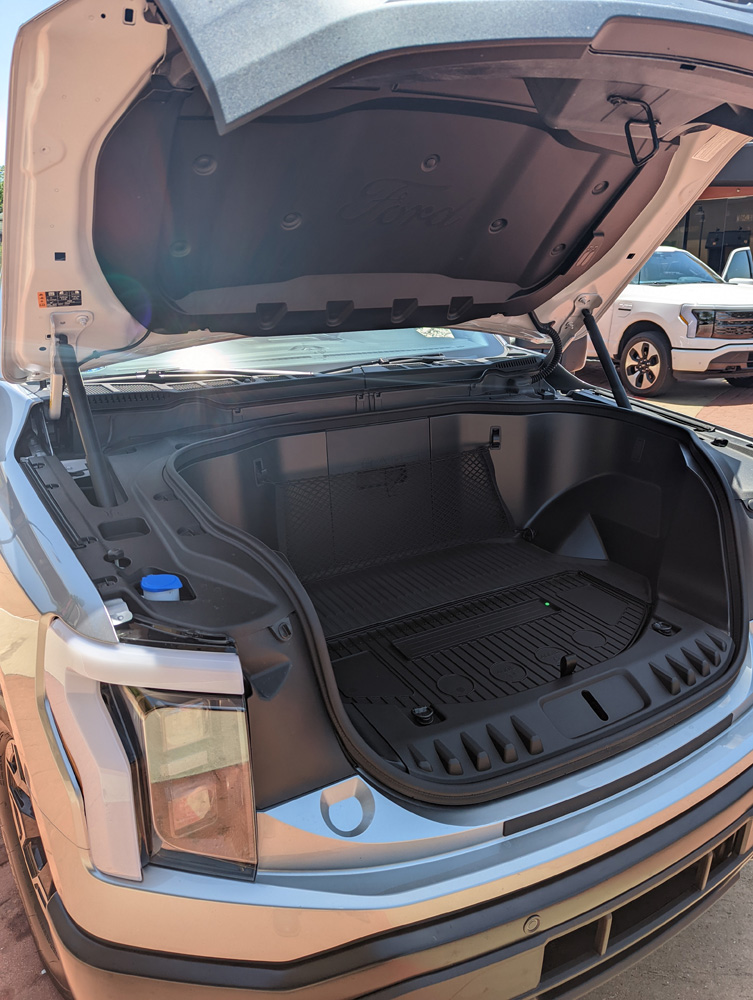
If you’re a family of four or just have all the seats in the cab taken, the frunk is handy storage space for things like groceries or valuables that don’t belong in the bed of the truck. The cargo space in the frunk isn’t huge, but it was large enough that one of my fellow auto journalists and Mom Driver, Elayna Fernandez, could fit in. (If you’re interested in following her work, click here!)
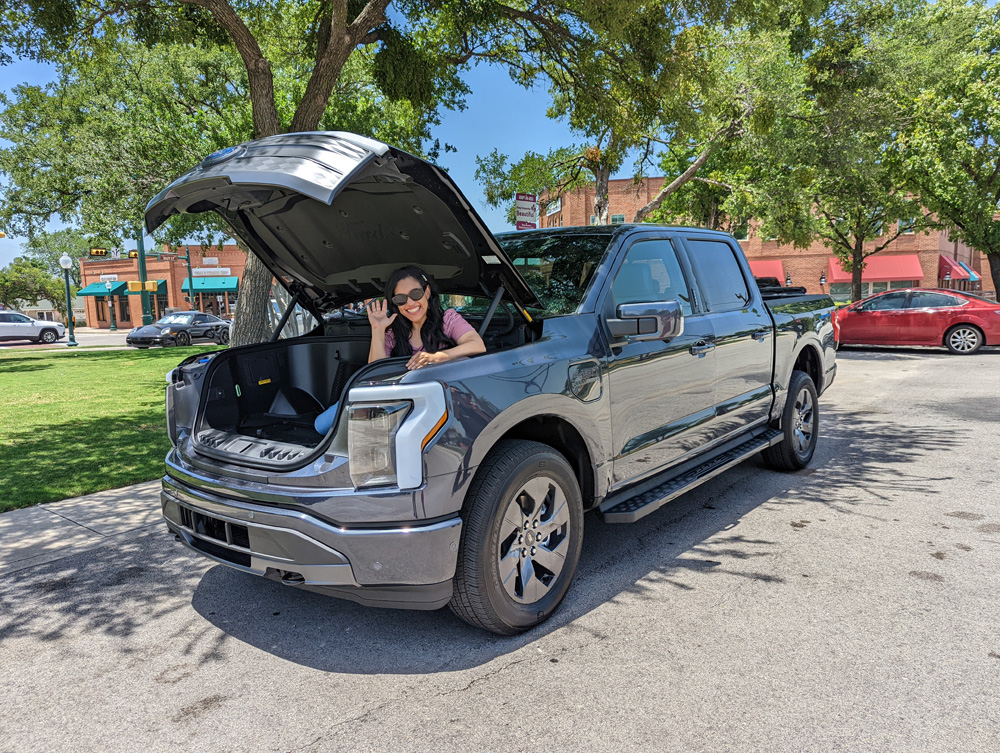
No Need to Show Off – Without a few key giveaways, you almost couldn’t tell the Lightning is an electric truck just by looking at it … and that’s the point. The Rivian R1T and the Tesla’s Cybertruck both flaunt a design that stands out and is clearly different. The Lighting is simply an F-150 with an electric engine. It is handsome, confident-looking, and stylistic without being overbearing. The ribbed, enclosed grill upfront is futuristic enough, and the LCD lights that wrap around it and across the nose are a nice touch. That same light configuration is repeated in the rear taillights, reminding me of my own Dodge Charger. The optional 20” alloy Dark Gray rims took the trunk’s edgy factor up a notch.

This subtly refined aesthetic extends to the cabin, where all the materials felt appropriate and comfortable. Ford knows how to build an attractive, rugged truck cabin, and everything that works so well in a gas-powered F-150 is on display here. Speaking of display, a key difference in the Lightning is the giant 12” Productivity screen positioned prominently on the dash. Because of its large screen size, there is space to allow the driver to customize the presentation of the digital information to their liking, but it’s also a distraction, and I couldn’t help but wonder how many watts the screen was pulling/draining from the battery just by being on.
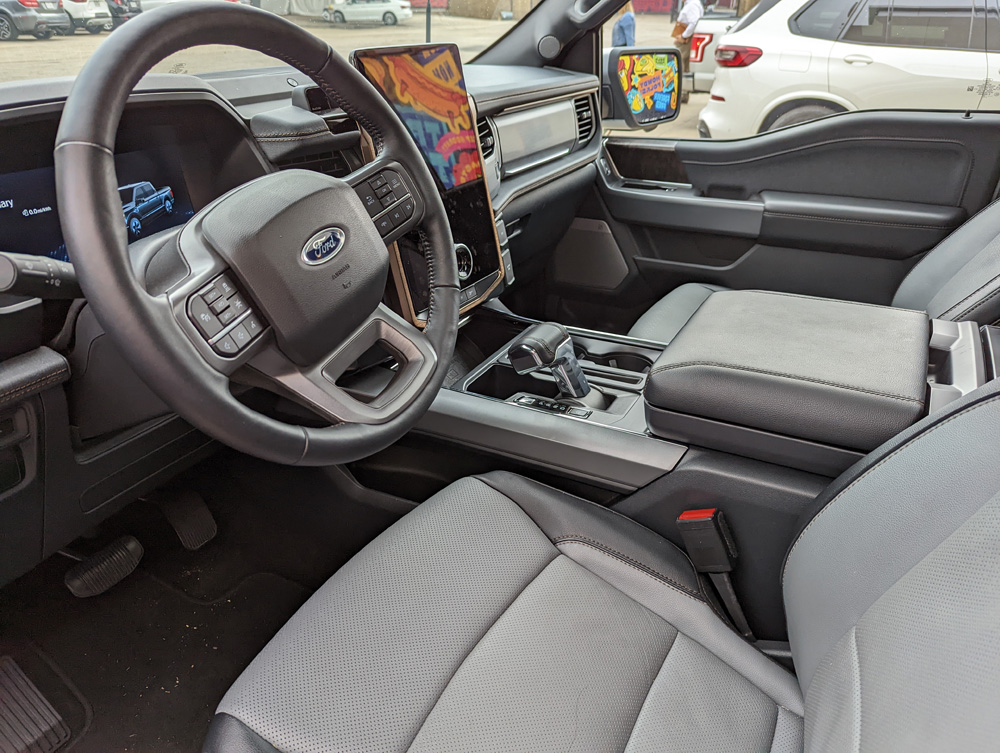
The cabin is exceptionally roomy and spacious. There was more than enough room for the child seats in the back row of the cabin, and there was ample storage space throughout. The double-wide moon roof in the version of the Lightning I tested was impressive and can delivering breathtaking views of the sky as you zoom past.
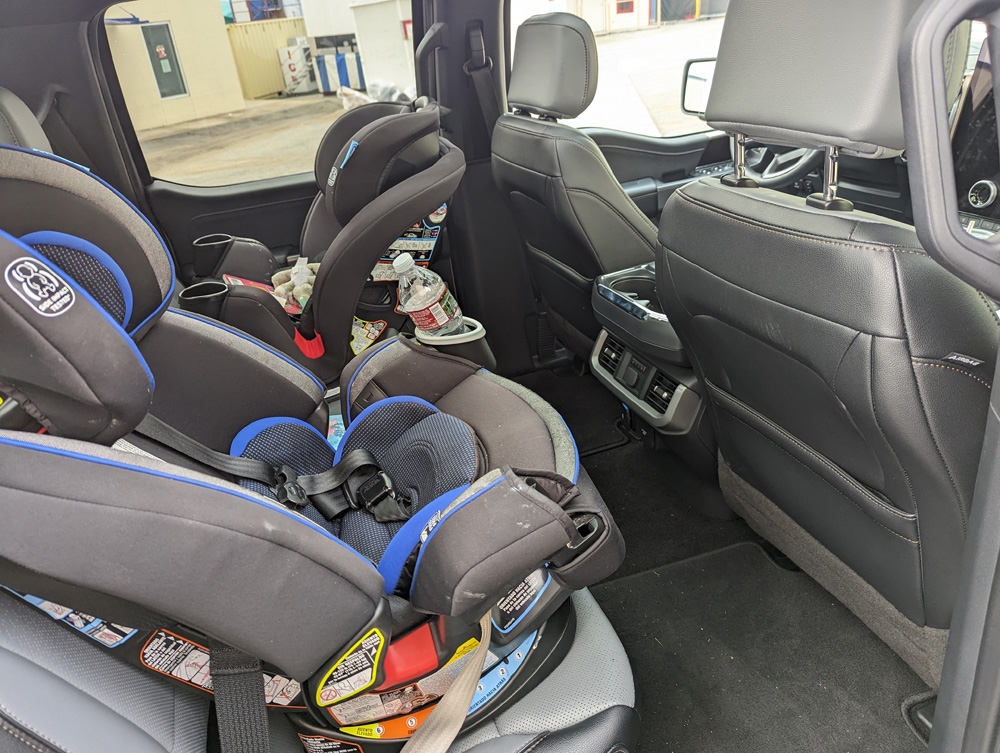
Tech-nically Convenient – Despite my distaste for the large screen up front, the infotainment display does allow for Ford’s user-friendly interface to shine. I even like how cleverly, if wholly unnecessary, the physical volume knob is integrated into the touch screen itself. There are tons of cool informational gauges and digital flair through the dash to make this really feel like a truck from the future. I particularly liked the status bar displayed when the truck is charging.
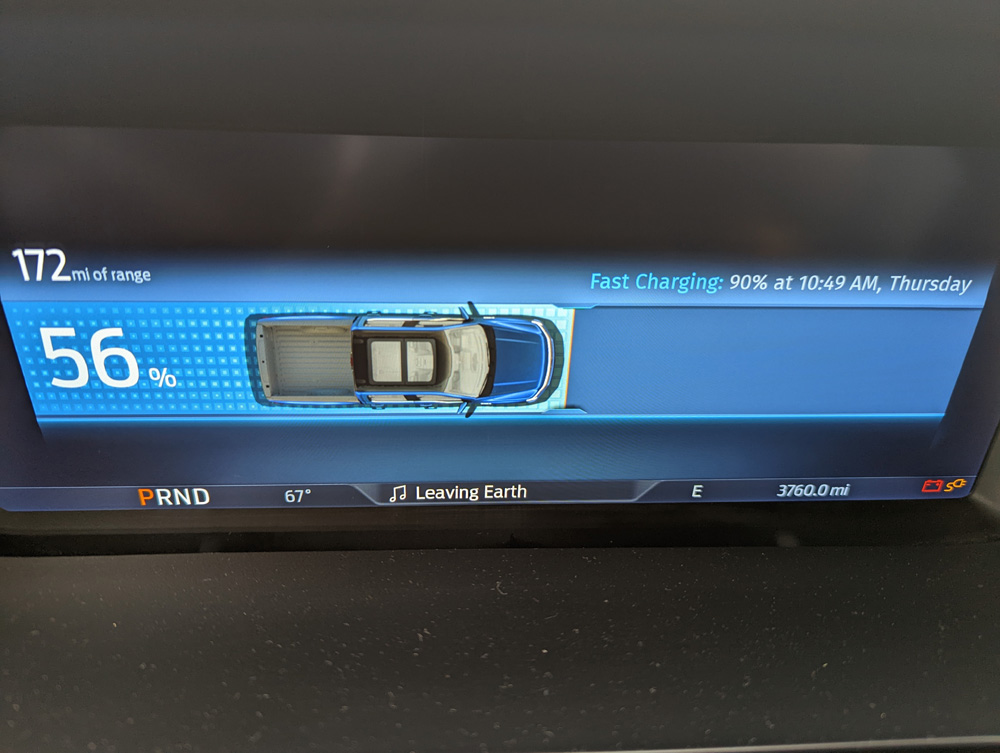
Ford’s transformable center-console-into-a-work-area is flawless and feels like it should be an essential option for the Lightning. It took me nearly an hour and a half to charge the truck from around 10% battery capacity to about 95% capacity at a fast charger. I spent this time working on my laptop, which fit perfectly on the flat surface that drops down once the shifter is laid flat. This is such a key feature for any Dad Driver who finds himself needing to work from his vehicle, and until charging technology evolves, it comes in handy while waiting at public chargers.
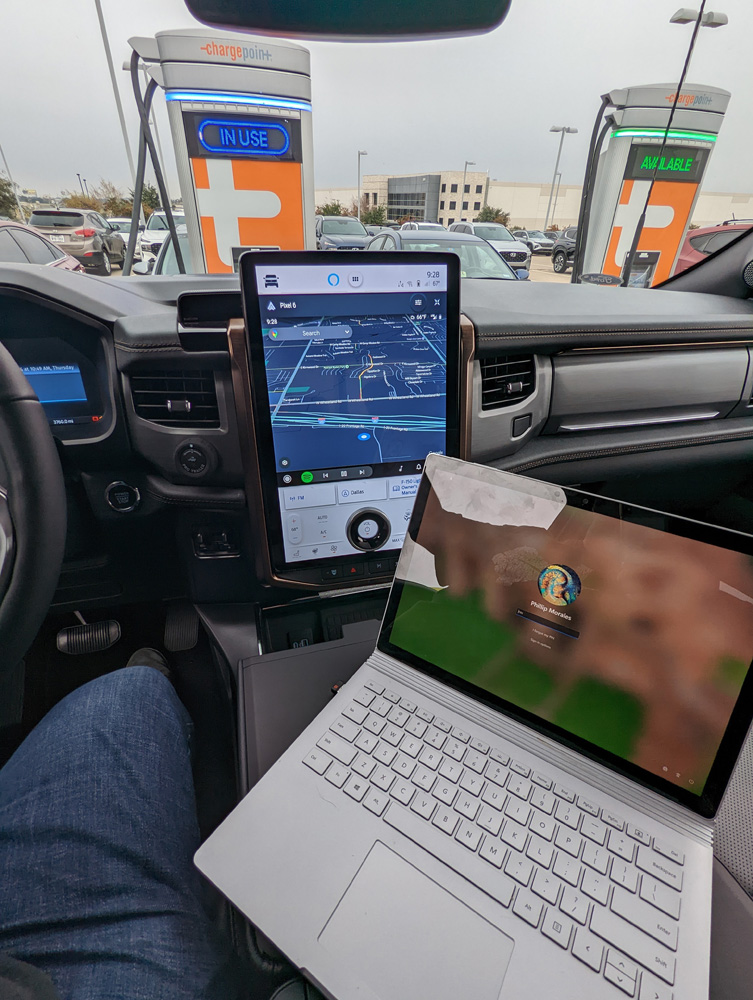
As Safe as Ever – The lightning comes equipped with all the tried-and-true safety features that its gas-powered relative has. Automatic emergency braking with pedestrian detection and lane departure warning with lane-keeping assist come standard. The blink spot / cross-traffic alert system also works exceptionally well, as they both utilize the 360-degree camera system surrounding the truck. Not to mention evasive steering assist is now a thing, helping drivers avoid collisions. Turns out, the electric motor isn’t the only thing futuristic on this truck.
What Gets This Dad’s Downvote
Range Anxiety – Innovation can sometimes create a host of new potential problems, and electric vehicles, in general, have contributed to the creation of what has been dubbed “range anxiety.” It’s the pressure drivers feel to keep an eye on the battery’s range in mileage while driving an electric vehicle. With a gas-powered vehicle, there is a certain amount of comfort, knowing that a gas station should always be available if needed. With an electric vehicle, finding a charger while on the road can, unfortunately, be a wild goose chase. To make matters worse, the size of the battery in the Lightning basically requires the use of a fast charger which can be trickier to find. You plug it into a slower charge, but you’ll get such a small amount of charge per hour that it isn’t convenient for a quick charge.
I live in a large metropolitan city, and even so, faster chargers are not always nearby or available. To be fair, availability is slowly getting better, and more charging stations are popping up all the time, but during my week with the Lightning, I spent a good amount of time searching for a working and available fast charger. Availability of chargers is certainly not Ford’s problem, but it is something to consider where you live. Charging the Lightning was a slower affair than I expected, and I spent nearly an hour and a half charging the Lightning to about 95% at a fast charger. Ford says that fully charged, the Lightning with the extended battery pack has a range of 320 miles. Almost fully charged, I only ever got 280 miles, and that would quickly deplete as I used features like air conditioning.
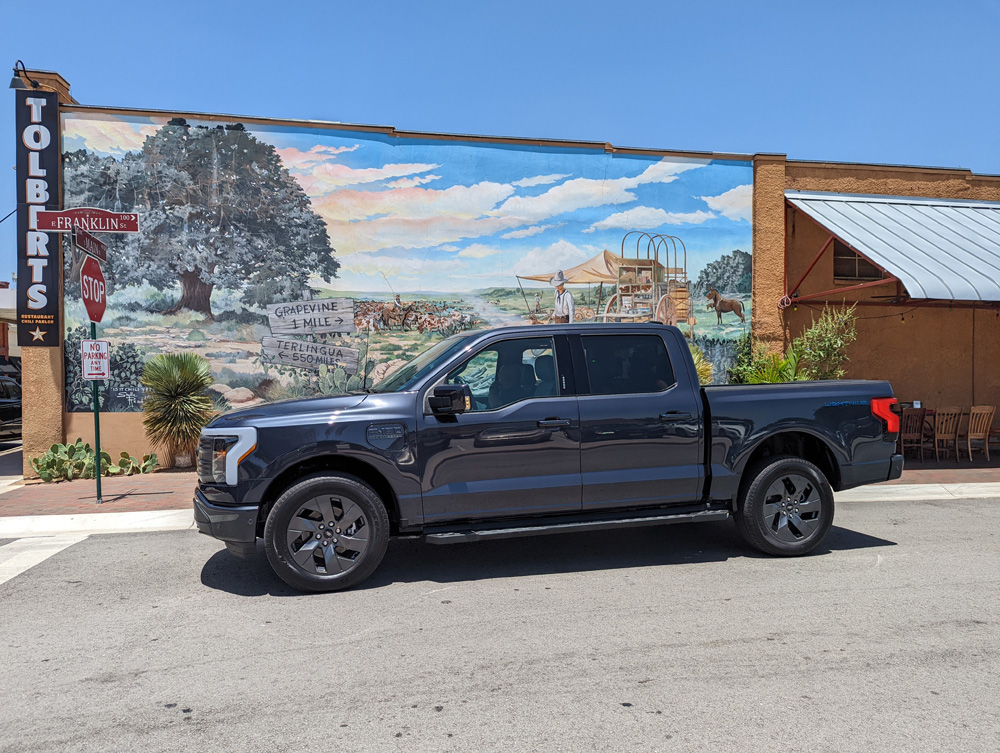
Without proper planning and regular charging, you could find yourself sweating the miles you have left. Therefore, owning an electric vehicle should be considered a commitment that includes a home charger or, at the very least, a 220 volt in your garage. I used a measly 110 volt outlet at night to charge the Lightning, but even after 12+ hours of charging, I would only gain 30 or so miles to my range. I drive more than that during my daily commute to work and to my children’s school. While I appreciate the option, I can’t imagine opting for the standard battery for the Lightning, which only offers a 230-mile range fully charged. Unfortunately, the extended battery options cost an additional $10,000 to the base price, and I would argue this is an option that’s actually a necessity.
Features that come with a Price – The base price for the most standard Ford F-150 lightning is just under $42k. Not too shabby for an amazing electric experience house inside of a capable truck. You’ll definitely want to opt for the extended battery, though, which can add 10k to that price. Adding on the extended battery comes in a package with handy features, including Ford’s Pro Power Onboard generator – an interesting feature that Ford says allows the truck’s battery to power your entire house for a couple of days. The Lightning we tested came with the Lariat Extended Range package that starts at $79k. As much as I enjoyed the F-150, that price tag would be a bit too steep for this Dad Driver.
The Truck of the Future
The vehicle of the future today? The Ford F-150 Lightning was one of the first electric vehicles that I’ve driven lately that fits that bill in unexpected ways. Afterall, it is basically an F-150 with an electric engine but it’s the marriage of those two ideas that has me in awe. Perhaps because that fusion was accomplished so well here. One thing is for sure, there is a future for this “truck of the future” – my daughter.

My daughter Zoe…a future Ford Lightning Owner?
My daughter Zoe loves trucks and enjoys exploring them with me when I have one to review. She was blown away by the fact that this one had to be plugged in. She couldn’t wrap her head around the idea. Funny enough, electric vehicles might just be the only option of vehicle once she comes of age to drive. Would she want to drive an F-150 Lightning when that day comes? I sure hope so.
Phillip is a filmmaker, an award-winning playwright, screenwriter and craft beer aficionado. He writes about cars, car tech, and various other cool Dad things. He lives, works and plays in Dallas, Texas.


